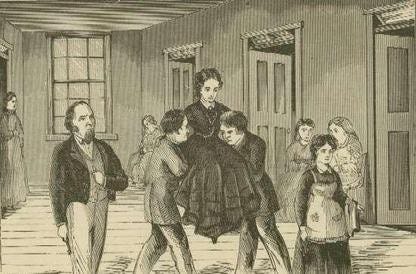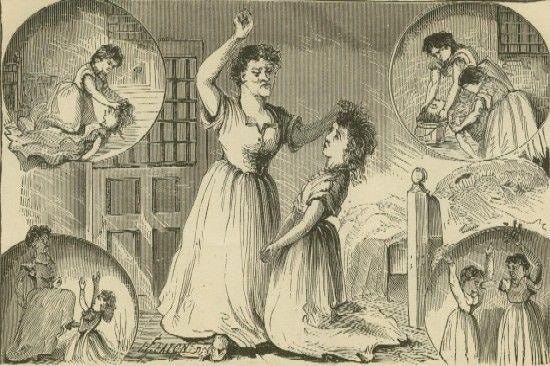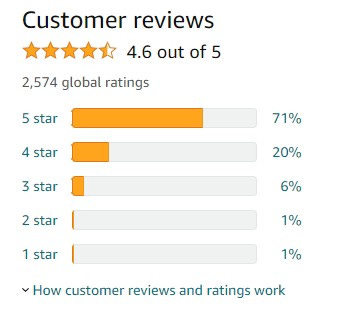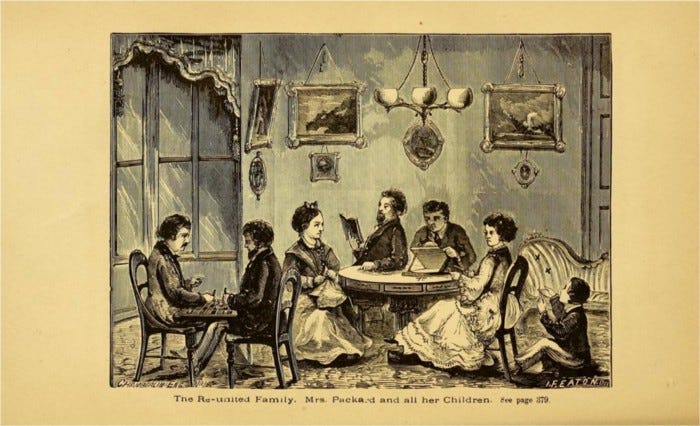The Woman They Could Not Silence Is A Great Read. It's Why The Internet Makes Me Mad
The story of one woman, her incredible fight for freedom, and the men who tried to make her disappear
Elizabeth Packard’s worst enemy sat across the kitchen table from her.
Her husband was a Calvinist preacher, 14 years older than her and a long time friend of her father. Married him because he dad said to.
She was sick to death of his religious beliefs.
Shrieking that humans are depraved. Every one of them. Children included. You don’t coddle them, you teach them they’re depraved and need to spend their lives repenting for their sick depravity.
Except him, of course. He’s the preacher. Word of God. Blah, blah.
You will listen, wife.
You will do as I say and you will think as I tell you.
Except, she wouldn’t.
Her babies weren’t depraved. They were innocent little children that need love and affection not sermons and punishment.
One day in church as he was screaming vile sentiments at the congregation about their depravity, she stood up and said she’s going to the Methodist church across the street. Surely they must be kinder.
He was livid. How. Dare. She.
You will be riveted―and inspired. Bravo!”
— Liza Mundy, New York Times bestselling author (source)
That’s when she was hauled away
Any woman who believed she had a right to an opinion was clearly insane. A woman was to do what her husband said and think what he told her to think. That’s the “proper” nature of a woman.
That’s what “normal” women do.
To have opinions of her own? No. That’s insane.
To contradict a man? No. That’s insane.
Worse, the laws were firmly on his side.
A man had a right to “due process” before being declared insane. A trial or hearing of some sort. But a woman? No due process. Just two signatures. Her husband and the admitting doctor at the asylum.
She fought. She screamed. She begged and cried. Didn’t matter.
Her youngest baby wasn’t even walking yet when the men forcibly carried her out of her home and to the asylum.
“Like Radium Girls, this volume is a page-turner.”
―Library Journal, starred review (source)

She wrote it all down.
When she first got to the asylum, she thought it was going to be for a short time. She truly believed her husband was just teaching her a lesson.
After all, he’d only brought 3 dresses.
Plus? She had a baby at home. And only one daughter. Five boys, one girl.
Little Libby was barely 11. Way too young to care for everyone herself. Surely, she’d go home soon. She just had to be patient. Wait him out.
But then a trunk arrived. That’s when she almost fell apart. It finally dawned on her that he didn’t intend to bring her home. Ever.
All around her, women in the same circumstance. Sane women who had annoyed their husband one time too many.
She started writing down everything she saw.
“One night I was aroused from my slumbers by the screams of a new patient who was entered in my hall. The welcome she received from her keepers, Miss Smith and Miss Bailey, so frightened her that she supposed they were going to kill her.
Therefore, for screaming under these circumstances, they forced her into a screen-room and locked her up. Still fearing the worst, she continued to call for ‘Help!’ Instead of attempting to soothe and quiet her fears, they simply commanded her to stop screaming. But failing to obey their order, they then seized her and violently dragged her to the bathroom, where they plunged her into the bathtub of cold water.” (source)
She scribbled everything on scraps of found paper. Bits of paper torn from the edges of letters and old newspapers.
Bathtub torture. Black eyes and bruises. The weeping that never stopped. Abuse at the hands of their caregivers. The stories other women told her, whispered when no one could hear. She wrote names and dates.
She wrote on both sides of the paper scraps. Both horizontally and vertically to get more words onto every bit of paper she could find.
Hid them so the doctor wouldn’t know.
Put this book in the hands of every young feminist.”
―Booklist, STARRED review (source)

The reviews are stellar, 4.6 stars on Amazon
You might think it’s just a story of a woman who lived 160 years ago. But no. Because what you’ll also see is the language and attitudes about women’s mental health that have persisted through the years.
“…forces the reader to examine once more the language and attitudes around women’s mental health.” — BookPage (source)
The laws have changed since 1860, but misogyny hasn’t changed much. Too many men still love to call women “crazy bitches” and as the saying goes, the comments on feminist posts are why we still need feminism.
This book may take place 160 years ago, but it has so much to teach us about gender, misogyny, and medicine today.” ― Susannah Cahalan, NYT bestselling author (source)
More than one reader saw beliefs and behaviors that persist still today and said so in reviews and comments.

Long story short, she won…
No spoilers. I’m not going to tell you how she won. It will stun you. What I can tell you is that it took far too long.
Her children were without their mother for three long years.
Her incarceration had a lifelong effect on her children, especially the little girl left to raise an entire family on her own at age 11. Because heaven forbid her father would help with anything.
As the little ones cried for their mother, he told them forget about her, she’s insane. Told them they’re depraved. They shouldn’t be so attached. It’s not normal. Not holy. They better pray God saves their soul.
Half the book is about her time in the asylum trying to get out.
The other half is what she did after she got out.
She was damned and determined to help every woman still in there. And she did. All by herself. The power of one angry woman determined to help the many women locked into asylums wrongly. They were her friends.
“A riveting chronicle…”
― Publishers Weekly, STARRED review (source)
Elizabeth Packard is why the internet makes me mad
After I read the book, I got curious. So I googled her name and learned once again why the internet makes me mad.
Why can’t we get one woman’s story right?
Plenty of pages about her. Most with everything backwards. Mixed up. One site said she was in the asylum because of the sewing machine salesman.
Omg, no. That happened after. When he was trying to commit her again, this time for the rest of her life.
Seems to me the internet is full of too many “content creators” who are more concerned about publishing yet another page, another story, than actually getting the facts right.
Just another woman, right? Who cares if the facts are right?
Well, Kate Moore did. It’s why she wrote the book.
And it’s stunning. A page-turner and a compelling read.
It’s not a dry history tome. It’s a story. It reads like any of your favorite fiction novels. Except it’s not fiction. It’s a true story that happened in the past and still bleeds into the present.
Well researched and easy to read.
Highly recommended.
“The Woman They Could Not Silence will linger long after the last page is read.”
― Nathalia Holt, New York Times bestselling author (source)






“...It reads like any of your favorite fiction novels. Except it’s not fiction. It’s a true story that happened in the past...”
As has been said many times: the truth is stranger than fiction.
Guess I will need to add this title to my ‘future read’ list.
Indeed feminism is still needed in 2023 (sadly).